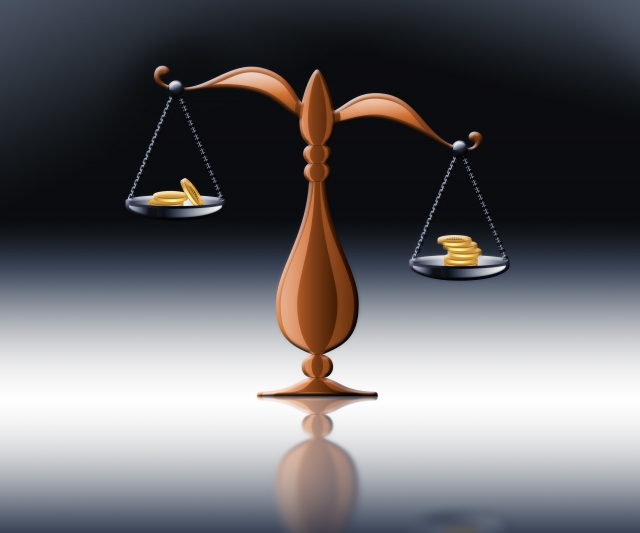Nearly two years ago former Panamanian Securities and Exchange commissioner David Saied penned an article that challenged many core beliefs held by the economic elite within the United States. This article, published by the Ludwig von Mises Institute on September 10, 2008 and entitled “America’s Economic Myths,” addresses six false assumptions that have become accepted as fact by many whom Saied identifies as “mainstream economists and so-called experts.” Let us examine these six economic myths in light of the truth.
The first three myths addressed by Saied involve inflation and energy. (Regarding inflation, Saied clarified that he employed the popular notion of inflation as “the general rise in prices” instead of the correct “expansion of the money supply” definition.) The final three myths cover consumption and were created by the attempts of Keynesian economists to influence public policy.
Myth #1: “High oil prices are due to America’s dependence on foreign oil.”
Saeid argues that the country of origin does not determine the price of oil but economic factors — like supply, demand, labor, and production costs — are what drive the price of oil.
The high price of oil has nothing to do with its origin; the price of oil is determined in international markets. Even if the United States were to produce 100% of the oil it consumes, the price would be the same if the worldwide supply and demand of oil were to remain the same. Oil is a commodity, so the price of a barrel produced in the United States is basically the same as the price of a barrel of oil produced in any other country, but the costs of labor, land, and regulatory compliance are usually higher in the United States than in third-world countries. Lowering these costs would help increase supply. Increasing supply, whether in the United States or elsewhere, will push prices lower.
Regarding dependence, Saied points out that importing something doesn’t mean you depend on it and he uses a local supermarket analogy to explain. In a sense, we import food from our local supermarket for our own consumption. That transaction makes the supermarket an exporter to us. That being the case, Saied argues that the exporter depends on the customer more than the other way around. In short, the overarching reason why we import something is because we can purchase it for less than we can produce it ourselves.
Regarding the high price of oil, Saied concludes that the central bank’s financial policies are to blame:
Most, if not all, of the higher price of oil can be explained by the expansion of the money supply or the debasement of the dollar. The foreign producers are not at fault; our national central bank is the culprit.
Myth #2: “Inflation is caused by rising oil prices.”
This statement is simply false, Saied argues. Again he lays the blame on the central bank’s policies:
If the money supply were to remain constant, then an increase in the price of one good, such as oil, would cause a decrease in the price of other goods. If more money is spent on oil, then less money will be available to spend on other goods. This will in turn cause a drop in the demand for other goods, which will subsequently cause a drop in the prices of these goods. The reality is that inflation is always a monetary matter, caused by the increase in the money supply due to the interest-rate-easing policies of central banks.
Myth #3: “Current inflation is being caused by the increased demand of millions of new consumers in China and India.”
At first glance this myth appears to be true because the demand for oil has increased significantly with the industrialization of India and China. However, Saied correctly points out that these new consumers are also new producers which means that they generally produce more than they consume “because most workers have to produce more than what they earn in wages (if not, they lose their jobs).” So India and China’s increased production has increased the supply of goods worldwide which has lowered prices for many items, particularly items produced in China. In aggregate, this increased production offsets their increased consumption so, while oil prices may rise, other prices fall by an even greater amount. Saied notes, though, that there is one factor that can alter this scenario temporarily:
[T]he only way these new workers can increase their consumption beyond what they produce is through credit. Thus we return to the real culprit behind inflation: credit expansion due to central banks’ intervention in the financial markets.
Myth #4: “Consumption is the most important element of the economy.”
Again this myth is not true. Investment is key to the long term success of the economy. Saied explains:
Consumption is indeed important in a free economy: particularly the freedom of consumers to buy their goods in unhampered markets. However, key to long-term economic growth is investment (savings), which is the opposite of consumption. Public policies that promote consumption — such as low interest rates — do so at the expense of savings. Less savings means less investments; an economy that does not save or invest will consume all of its resources and eventually end up bankrupt.
Myth #5: “Excess consumption is a feature of the free-market capitalist system.”
This myth is simply not true. Excess consumption is caused by a disincentive to save. Again, Saied points largely to the central bank as creating an environment in which excess consumption is encouraged.
Excess consumption is mostly caused by central bank’s artificially low interest rates, which promote lower savings and higher consumption than would naturally occur. Currently, the real interest rates of savings accounts are negative. Thus it makes no economic sense to save. Since these same policies cause price increases, it makes sense to consume as much as you can immediately, before prices rise. Therefore we see that excess consumption is being caused by government policies and not by the capitalist free-market system.
What does the phrase “real interest rates of savings accounts are negative” actually mean? It means that the low levels of interest earned on one’s savings or investments (the dividends paid) are less than the rate of inflation. Put another way, the purchasing power of money sitting in a savings account is reduced over time as the dollar, in this case, becomes worth less in real terms — in effect, the low rate of interest paid on one’s savings fails to offset the inflation loss thus he cannot even reach “break even” status with his savings and/or investments. When this happens, the act of putting money into “savings” becomes a costly activity and so, in an effort to preserve their purchasing power, consumers buy more than they need before prices increase due to their money losing more value.
Myth #6: “Federal Reserve interest-rate policy can help the economy.”
Saied points out that to keep target interest rates low the Federal Reserve (“the Fed”) must, in reality, create money “out of thin air.” A fancy way of describing this intervention is to say that the Fed is “adding liquidity to the money supply.” Fancy term or not, though, the result is the same: more money is created without assets to back up that new money. Saied explains:
Many believe that this artificial injection of liquidity creates economic stimuli and promotes growth. However, even though it creates an apparent bonanza, these monetary injections must eventually be “paid back.” This payback happens by means of higher prices, the so-called inflation.
This increase in prices occurs because our money is actually worth less now than it was before the Fed’s “liquidity increase.” This reduction in purchasing power causes a problem for consumers because they are now worse off than before the Fed intervention.
A second problem also is created by the Fed’s intervention. Fed-induced below-market interest rates encourage excessive debt accumulation through unwarranted borrowing. The problem is further compounded by the low savings rates explained above. Saied points out that this whole scenario encourages “people to withdraw money, lowering the market supply of funds.” The results is an “eventual credit crisis, which follows the boom period that was caused by artificially low interest rates.”
Saied concludes that the current financial crisis should have pushed interest rates higher but Fed intervention prevented a free-market correction from occurring. Fed interventions have serious costs and, as noted above, produce other problems that prolong a financial crisis. Furthermore, many libertarians and strict-constructionists point out that there is no constitutional justification for such interventions by the federal government.
Free market proponents tend to argue that Fed intervention prolongs economic suffering and endangers the American Dream. Given these outcomes and the likely unconstitutional nature of such actions, the Fed’s manipulation of our economy must be vigorously opposed. Sadly, the widespread acceptance of the above economic myths, especially when propagated by supposed defenders of the free-market system, hampers efforts to build the public support necessary for a return to free-market principles. However, when free-market advocates effectively challenge these myths and their false assumptions, the American people will be able to see the wisdom of implementing serious economic reform — the kind that yields real free-market solutions capable of producing recovery and long-term economic prosperity.
Image Credit: Michelle Meiklejohn


